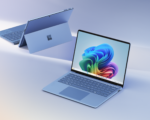Microsoft has officially announced that it will end support for the Windows Mail, Calendar, and People apps by the end of this year, marking a significant shift in how the company handles its email and scheduling tools. Instead of relying on separate apps for each service, Microsoft is directing users to its new Outlook for Windows app, which consolidates emails, calendar events, and contacts into a single, unified platform. This change is part of Microsoft’s broader effort to streamline its productivity offerings and encourage users to embrace the enhanced capabilities of Outlook.
According to a blog post from Microsoft, the company has decided to phase out the Mail, Calendar, and People apps to make way for a more integrated experience within Outlook. The redesigned Outlook app boasts a simpler user interface along with a host of new features designed to improve efficiency. After December 31, users will no longer be able to send or receive emails through the existing Mail and Calendar apps. Microsoft is encouraging users to transition to Outlook for continued access to their email, calendar, and contact management services.
For users who are concerned about the transition, Microsoft has assured them that local data such as emails, calendar events, and contacts stored in the Mail, Calendar, and People apps will still be exportable. This means that users can back up their information before fully migrating to Outlook. Additionally, Microsoft is providing flexibility by allowing users who are not interested in the Outlook app to revert to the older Mail and Calendar apps, though they will lose support and updates.
The new Outlook for Windows app will support a variety of email accounts, including those hosted by Microsoft (like Outlook and Hotmail), as well as work and school accounts. The app will also be compatible with third-party services such as Gmail, Yahoo, and iCloud through the Internet Message Access Protocol (IMAP), ensuring that users have access to a wide range of email platforms within the new ecosystem. This move signifies Microsoft’s commitment to improving the user experience by focusing on a single, powerful app for managing multiple communication and scheduling needs















